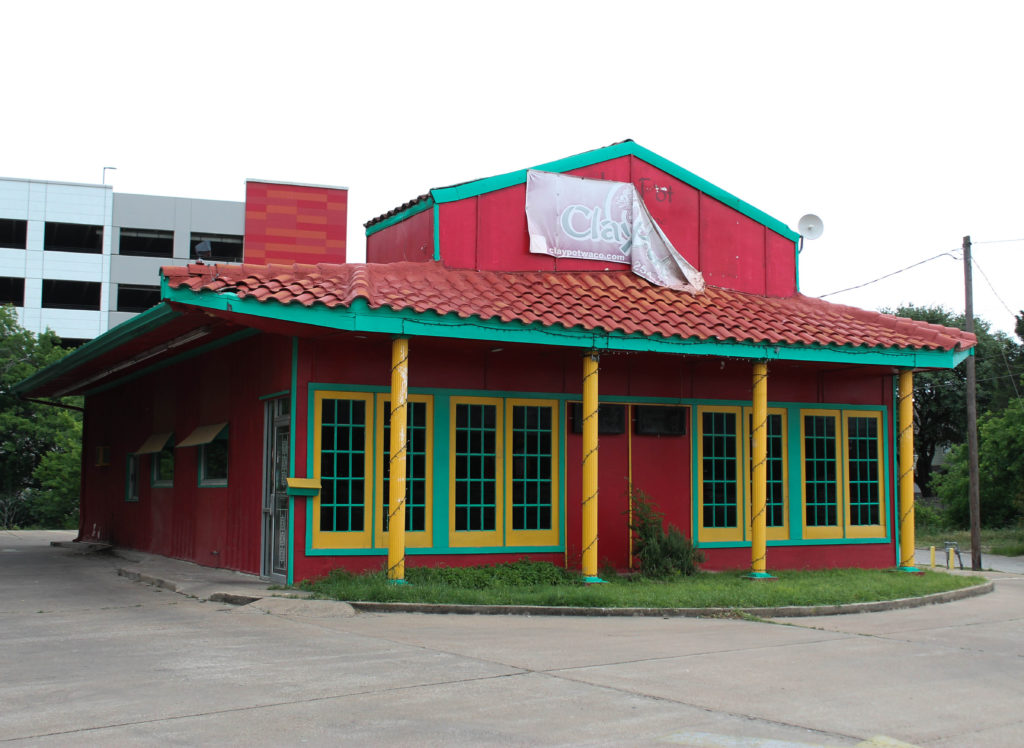Story by Meredith Wagner; Photos by Maggie Malone
Interstate 35’s significance within the Waco community stretches beyond concrete and yellow lines. For many, it is the primary bridge between home and work, residence and extended family, one opportunity and the next. People from all walks of life utilize its carefully carved trail, many of whom are probably unaware that Waco’s beloved pathway comes at a price.
This high cost has been paid by many Wacoans and business owners throughout time, including, notably, an entire community of working class minorities. In order to complete the initial construction of Waco’s segment of I-35, whole neighborhoods had to be uprooted. In order to undergo expansion today, the businesses we know and love must endure the same. Forced to relocate by the federal government, many Waco businesses either start fresh elsewhere or cease to exist altogether.

Cameron Morris, owner of Standard Hat Works, was one of the many business owners affected by I-35 expansion. Morris had operated his specialty shop out of 1826 Circle Road before the government claimed eminent domain on his building and forced him to relocate.
Now located at 1304 N. New Rd., Morris continues the long-standing tradition of creating and refurbishing traditional cowboy hats. He was one of the lucky few who had the resources to move from one place to another. “If I didn’t have good people on my side, there’s no way we would have survived this move,” Morris said.
With equipment over 100 years old, some machinery weighing over 1,000 pounds, Morris said he had specific needs that were not met by the financial compensation he received from the government. “Small businesses like us, especially specialized shops, they don’t take the hit as easy,” Morris said.
Since Morris had previously leased his location on Circle Road, he received no compensation for having to change locations. According to Morris, the Texas Department of Transportation [TxDOT] did not factor in all of the necessary moving costs. “They say they take care of you, but they really don’t. It puts you in a financial bind as a business owner,” he said. “We haven’t gotten past it by any means. We’re still trying to overcome the initial sticker shock of everything.”
Morris said he is ultimately happier in his new location, though he acknowledged that many other business owners who are forced to move do not find similar luck.
Project 4, the up-and-coming expansion of I-35 from four to six lanes through Waco, has not yet been completed, though preparation is well underway. The expansion of a 7.9-mile stretch from South Loop 340 to North Loop 340 is being pursued in a series of smaller projects as funding becomes available. The primary reason for this is “to meet local and regional travel demands,” thus improving the safety of travelers, according to the interstate’s website. Businesses near downtown and Baylor’s campus have been notified that their land will be claimed by the government. They are now evaluating their options and seeking ways to remain open.
Clay Pot, a Vietnamese restaurant and local favorite, will relocate downtown to 416 Franklin Ave. La Quinta, the inn adjacent to Clay Pot and frequented by Baylor families, will also be claimed in preparation for Project 4. As a business that relies heavily on its location, there may be a chance La Quinta will have to close its doors for good.

Other construction projects not far from the heart of Waco have already been completed, taking some of Waco’s gems with them. Altex Computers and Electronics, a business once loyal to Baylor and its technology needs, permanently closed its doors in 2016 because of the construction just south of Waco.
I-35 seems essential to the busy ebb and flow of Waco life, especially to those who frequent Dallas and Austin. But, as Kilgore graduate student Jon Platt wondered, “What’s the cost? Is the cost somebody’s livelihood?”
Platt has spent many months researching the long-lost communities that were replaced by I-35 and other similar projects in the late 1950s. One neighborhood, notoriously remembered as “Sandtown,” was named after the streets made of sand and the frequent sand storms that came with the wind. Sandtown was located between Mary Street and present-day Baylor Law School, and between Third Street and the Brazos River, according to Waco History, a joint program of The Institute for Oral History and The Texas Collection. Though it was never officially recognized by the city, it lives on in memory as a lively place, especially for those who grew up there.
Sandtown’s disappearance occurred during I-35’s humble beginnings. The interstate’s construction took off in Waco in 1958, according to the Waco History Project. This was around the same time urban renewal became especially prominent on the political scene, specifically at the federal level. Urban renewal was a federal program that focused on preventing continuous urban deterioration. It covered a wide range of services and projects, which often included claiming private land for public use.
The Housing Act of 1954 was influential to Interstate 35’s placement in particular because it “broadened the definition of an urban renewal project to include… slum clearance and redevelopment,” according to a 1958 study from the University of Chicago. The act was passed around the same time the interstate’s pathway was being drafted.
This means that city planners now had a legally valid reason to uproot neighborhoods like Sandtown. Referring to the removal of “substandard structures” in order to revitalize downtown Waco, a 1969 article from the Waco Tribune Herald read, “Urban renewal was selected as a tool to make this project possible.” Innovation may have seemed like a great idea in hindsight, but its effects were real and alive for those who had no choice but to leave their homes.
The drafting process was well documented by the Baylor Institute for Oral History. Robert Aguilar, who grew up in Waco and attended Baylor during the Civil Rights Movement, provided an inside look at the decision-making process. Aguilar worked closely both with the civic leaders responsible for the placement of I-35 and the minority communities that its trail eventually affected. He recalled in a 2005 interview that interstate thirty-five was supposed to be going around LaSalle. A combination of influences, including government officials and private forces, such as Baylor, lead to its current position. Aguilar said it was purposefully constructed closer to the downtown area and the university. “Baylor formed a natural barrier between it[self] and the black community and the Hispanic community further up,” he said. In the process, Aguilar said, “It demolished neighborhoods that have been there for years.”
Many would say that these communities were simply too deteriorated to be maintained or revitalized. A 1968 article from the Waco Tribune Herald read, “The 62-acre neighborhood a few years ago was one of the most rundown sections of the city… Baylor Waco Foundation… bought the land from the urban renewal agency and gave it to Baylor for campus expansion.” The reconstruction of these run-down areas seemed justified by their “less-than” infrastructure and their inhabitants’ “less-than” standard of living. But, as Aguilar noted, “I had a lot of friends there, and we never saw it as a poor community. We just saw dirt streets and unpainted houses.”
I-35 is located where it is today for several reasons. One of the more prominent of these is the idea that it would bring business and life to a town considered to have potential. Baylor students have a first hand view as Waco grows more and more into a thriving city.
Well encompassed by the popular term “The Baylor Bubble,” a mere five minute drive from campus to the other side of the interstate takes Wacoans to an entirely different world. Aguilar said the Interstate became a “railroad track” that distinguished between “the haves and the have-nots.” Supposed to be a grand tool for connection, Platt said, “Some of the biggest complaints about the interstate is [that] it didn’t connect us at all.”
As a solution, Platt suggested that communities collectively work harder to keep records and expose injustices. “We’ve got to get better at documenting things,” he said. “There are churches that are bulldozed every day in this country with beautiful historical value, and we’ll never remember them.”
For Morris, mindful consumer habits are the key to keeping vulnerable businesses alive.
“The only way we’re gonna get out of this debt we’ve got is to support our local people,” Morris said. “If every town does that… I think we’ll get out of this thing. But you’ve got to get everybody on board.”

